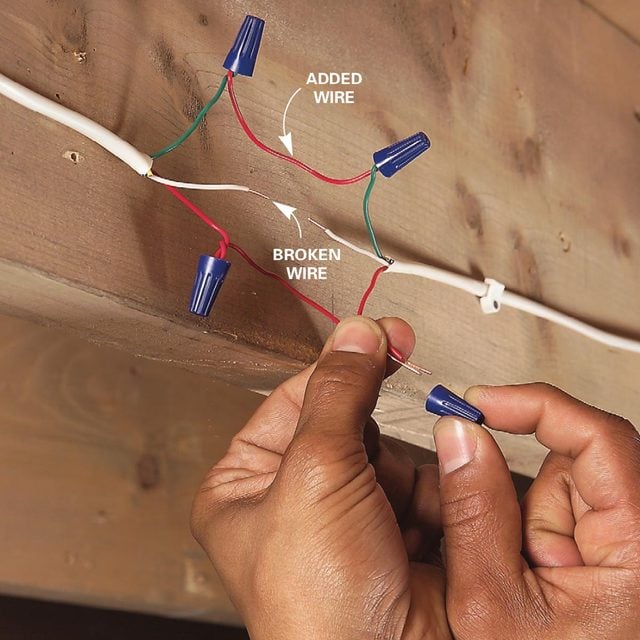Your Feit doorbell chime falls silent when visitors arrive—no welcoming “ding-dong,” just awkward moments as guests stand waiting at your door. This frustrating issue affects thousands of homeowners each year, leaving them wondering why their reliable doorbell suddenly stopped working. The good news is most Feit doorbell chime problems stem from just a few common causes that you can diagnose and fix yourself without professional help.
When your Feit doorbell chime not working situation occurs, don’t immediately assume you need a costly replacement. This comprehensive guide delivers step-by-step solutions for restoring your doorbell’s functionality, from simple connection checks to component replacements. You’ll discover exactly what’s causing the silence, how to verify each potential issue, and practical fixes that get your chime working again in under 30 minutes.
Power Supply Interruptions Causing Silent Chimes
Circuit Breaker Trips Cutting Doorbell Power
Your Feit doorbell chime not working problem often starts with a tripped circuit breaker. Doorbell transformers typically connect to dedicated 16-24 volt circuits that can trip during electrical surges or storms. Head straight to your electrical panel and look for breakers labeled “doorbell,” “chime,” or “transformer”—these are often overlooked during routine breaker checks.
Critical signs your circuit breaker caused the failure:
– Complete silence when pressing the doorbell button
– No indicator lights on electronic chime units
– Recent electrical work or storm activity in your area
– Other low-voltage devices (like thermostats) also malfunctioning
Check all breakers thoroughly—even those without specific labels—as doorbell circuits sometimes share breakers with lighting or appliance circuits. Flip any suspect breakers fully off before resetting them to ensure proper contact.
Transformer Failure Symptoms You Can Detect

Your doorbell transformer converts dangerous 120V household current to safe low voltage. This small metal box, usually mounted near your electrical panel or furnace, can fail without warning. A working transformer should emit a faint humming sound—if you hear silence when pressing your doorbell button, transformer failure is likely.
How to locate and verify transformer functionality:
– Search utility rooms, basements, or garage walls for small gray or beige boxes
– Look for wire connections leading to your chime box
– Use a multimeter to check for 16-24V AC output (set to AC voltage mode)
– Feel for slight warmth—cold transformers indicate complete failure
If your multimeter shows no voltage output, replace the transformer immediately. Most modern Feit-compatible transformers cost under $25 and install in minutes with basic electrical knowledge.
Wiring Connection Issues Creating Intermittent Failures
Corroded Connections at Critical Junction Points

Loose or corroded wire connections cause 60% of all Feit doorbell chime not working cases. These failures occur at three crucial locations: transformer terminals, doorbell button housing, and chime mechanism connections. Corrosion appears as distinctive green or white powder on copper wire ends and terminal screws.
Effective connection cleaning procedure:
1. Turn off power at the breaker before touching any wires
2. Disconnect wires and scrape corrosion with fine sandpaper
3. Apply electrical contact cleaner to terminals
4. Reconnect wires tightly and insulate with wire nuts
5. Test operation before closing all access panels
Pay special attention to outdoor connections, which suffer most from moisture exposure. Use dielectric grease on outdoor connections to prevent future corrosion.
Doorbell Button Contact Failures
Your Feit doorbell chime not working problem frequently originates at the button itself. Weather exposure causes internal contact points to corrode or stick, preventing the electrical circuit from completing when pressed. Remove your button cover with a small flathead screwdriver to inspect the internal mechanism.
Button testing protocol:
– Press the button while watching for the internal contact bridge
– Listen for a distinct mechanical “click” sound
– Check for visible corrosion on metal contact points
– Test continuity with a multimeter across the terminals
– Clean contacts with isopropyl alcohol and cotton swab
If cleaning doesn’t restore function, replace the button immediately—most models cost under $15 and install in minutes. Choose weather-resistant models with proper outdoor ratings for lasting performance.
Diagnose Specific Chime Problems Systematically
Complete Silence When Pressing Doorbell Button
Total silence when pressing your doorbell button indicates a complete circuit break. Follow this diagnostic sequence to pinpoint the failure point:
- Verify transformer output – Should read 16-24V AC with multimeter
- Test doorbell button – Check for continuity when pressed
- Inspect chime mechanism – Ensure hammers move freely
- Examine all wire connections – Look for breaks or severe corrosion
Start at the transformer and work your way toward the chime box, testing voltage at each junction point. The location where voltage disappears reveals your problem area.
Weak or Distorted Chime Sounds
When your Feit doorbell chime produces muffled, buzzing, or inconsistent sounds, partial power delivery or mechanical obstruction is likely. Common culprits include low transformer voltage, stuck hammers, or loose mounting components.
Sound quality restoration steps:
– Clean brass chime tubes with fine steel wool to remove buildup
– Adjust hammer strike distance to 1/8 inch from tubes
– Tighten all mounting screws on chime mechanism
– Verify transformer output reads at least 16V at chime terminals
If cleaning and adjustment don’t restore clear sound, replace the chime mechanism—modern units offer multiple sound options and improved reliability.
Replace Faulty Components Correctly
Doorbell Button Replacement Process
Replacing a faulty doorbell button resolves most Feit doorbell chime not working issues in under 15 minutes. Weather-resistant models prevent future moisture-related failures.
Step-by-step installation:
1. Turn off power at the breaker panel
2. Remove old button cover and disconnect wires
3. Connect wires to new button (polarity doesn’t matter for mechanical buttons)
4. Temporarily mount button to test operation
5. Secure final mounting only after successful testing
For electronic or video doorbells, follow manufacturer-specific wiring diagrams as polarity matters for these models.
Transformer Replacement Safety Protocol
Transformer replacement requires careful electrical safety practices. If uncomfortable working with household wiring, hire a professional—most electricians charge $150-$300 for this service.
Safe replacement procedure:
– Turn off main power at the breaker panel
– Verify no voltage with a non-contact tester
– Label and disconnect all wires from old transformer
– Mount new transformer in same location
– Reconnect wires to matching terminals
– Restore power and test voltage output before connecting chime
Use a transformer rated for at least 20VA (volt-amps) to ensure sufficient power for your chime system.
Prevent Future Chime Failures Proactively
Quarterly Maintenance Routine
Prevent Feit doorbell chime not working problems with simple seasonal maintenance. Set calendar reminders to inspect your system before extreme weather seasons.
Essential maintenance tasks:
– Clean doorbell button contacts monthly with alcohol wipes
– Vacuum chime box interior quarterly to remove dust buildup
– Check all wire connections twice yearly for tightness
– Test transformer voltage annually with multimeter
– Inspect outdoor components for weather damage after storms
Document your maintenance activities to track patterns that might indicate developing problems.
Weatherproofing Outdoor Components
Protect your doorbell system from moisture intrusion—the leading cause of Feit doorbell chime failures. Apply silicone caulk around mounting surfaces to prevent water seepage behind the button.
Effective weather protection methods:
– Install decorative button covers for exposed locations
– Use self-sealing wire connectors for outdoor junctions
– Apply dielectric grease to all outdoor connections
– Ensure proper drainage away from electrical components
– Replace cracked or damaged mounting hardware immediately
For coastal or high-moisture environments, consider upgrading to Feit’s weather-resistant models designed for harsh conditions.
When to Call Professionals for Help
Electrical Safety Red Flags
Stop troubleshooting immediately if you encounter any of these dangerous conditions:
– Exposed high-voltage wiring near the transformer
– Burn marks or melted components on the transformer
– Repeated breaker trips when testing the circuit
– Unusual electrical burning smells during operation
These indicate serious electrical hazards that require professional intervention. The risk of electrical shock or fire isn’t worth attempting DIY repairs.
Warranty Service Options
Feit offers 1-2 year limited warranties on most doorbell components. Contact Feit customer service at 1-866-326-2852 for warranty claims—have your model number and purchase receipt ready. Professional installation may be required to maintain warranty coverage on certain electronic models.
Quick Fix Summary for Immediate Results
Most Feit doorbell chime not working problems resolve through systematic troubleshooting focused on power supply, connections, and components. Start with the simplest checks—circuit breakers and visual inspections—before moving to more complex diagnostics. Remember these key patterns:
- Complete silence = Power interruption or transformer failure
- Weak/distorted sound = Partial power delivery or mechanical obstruction
- Intermittent operation = Loose connections or environmental factors
Document each test result to avoid repeating steps and efficiently isolate the problem. With the right approach, you’ll restore your welcoming chime sound in under 30 minutes using tools you likely already own. Most fixes cost less than $25 and prevent unnecessary service calls that average $150-$300. Keep this guide handy for future reference—seasonal maintenance prevents most recurring doorbell issues before they leave you with a silent entrance.





